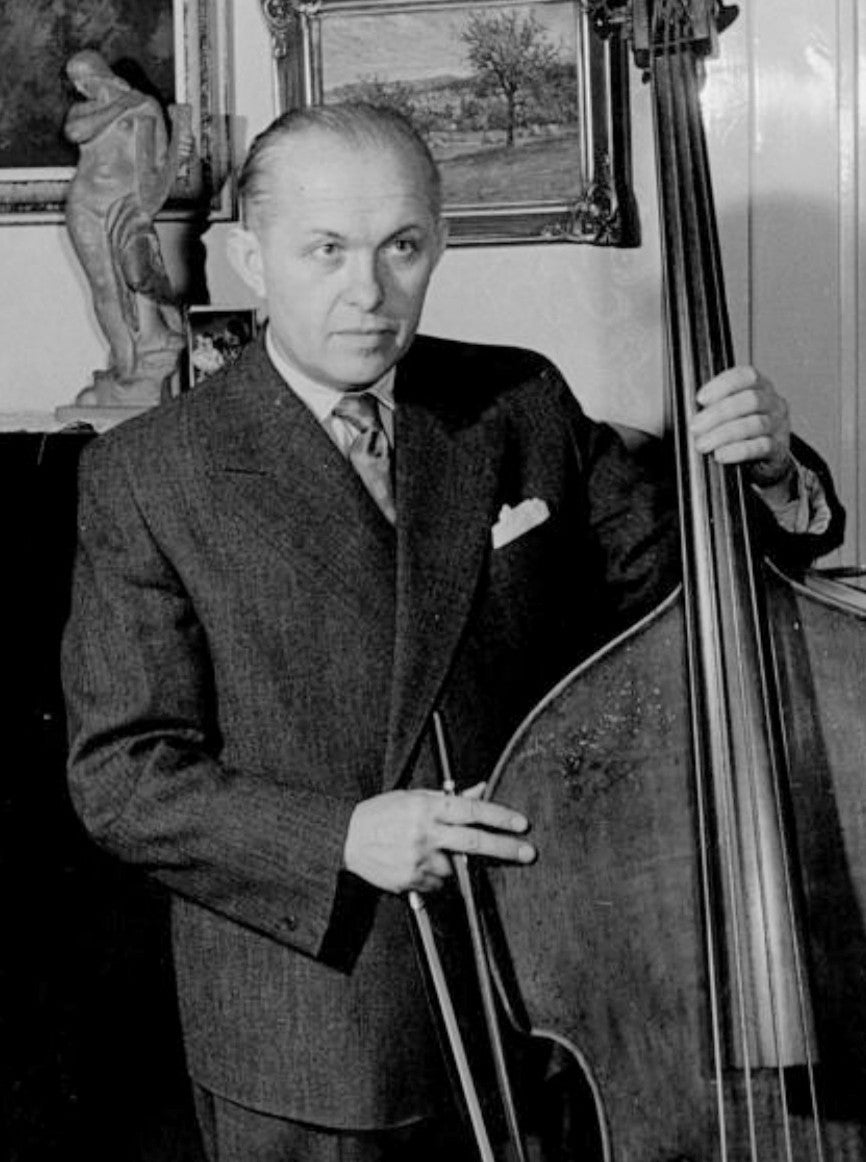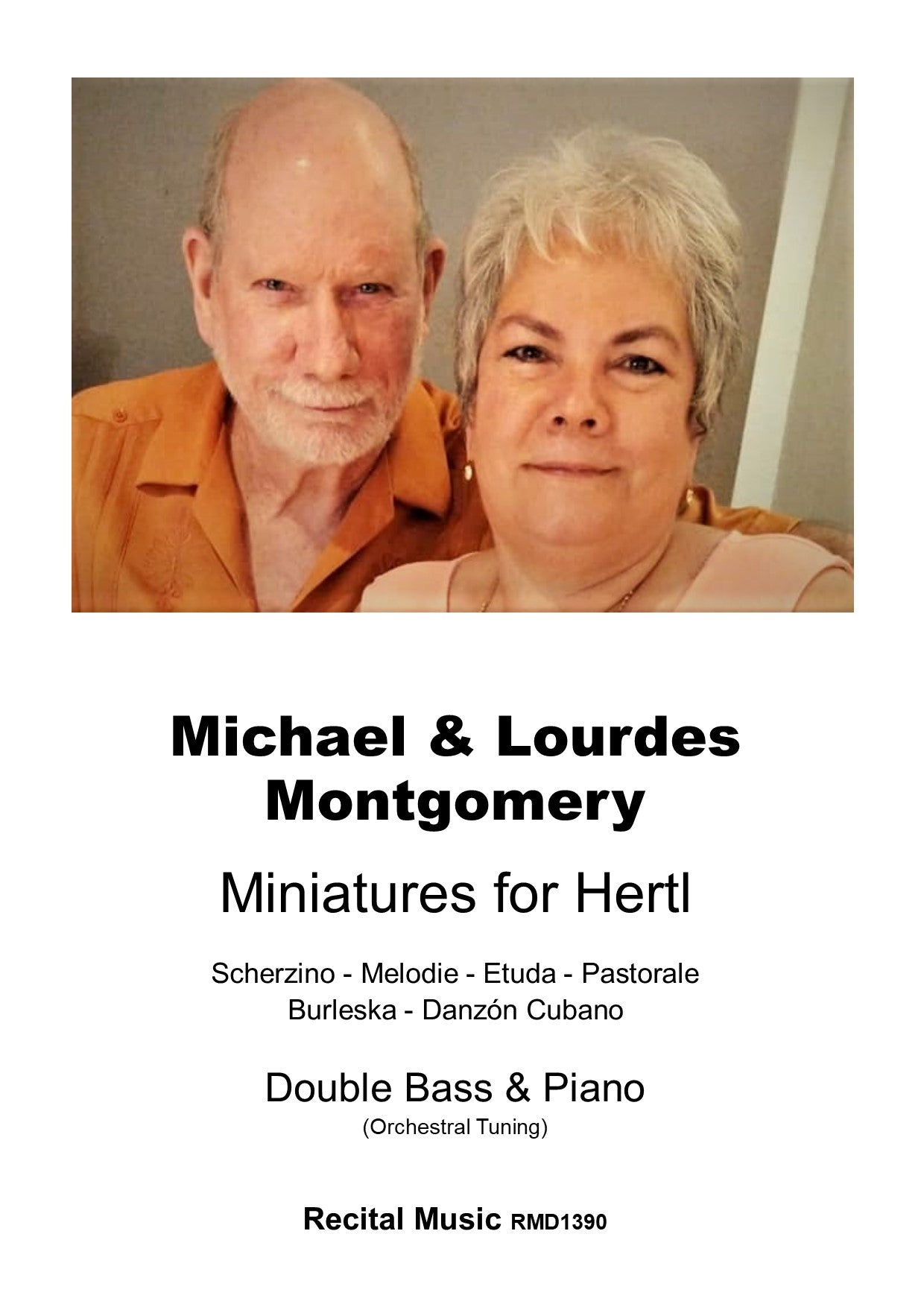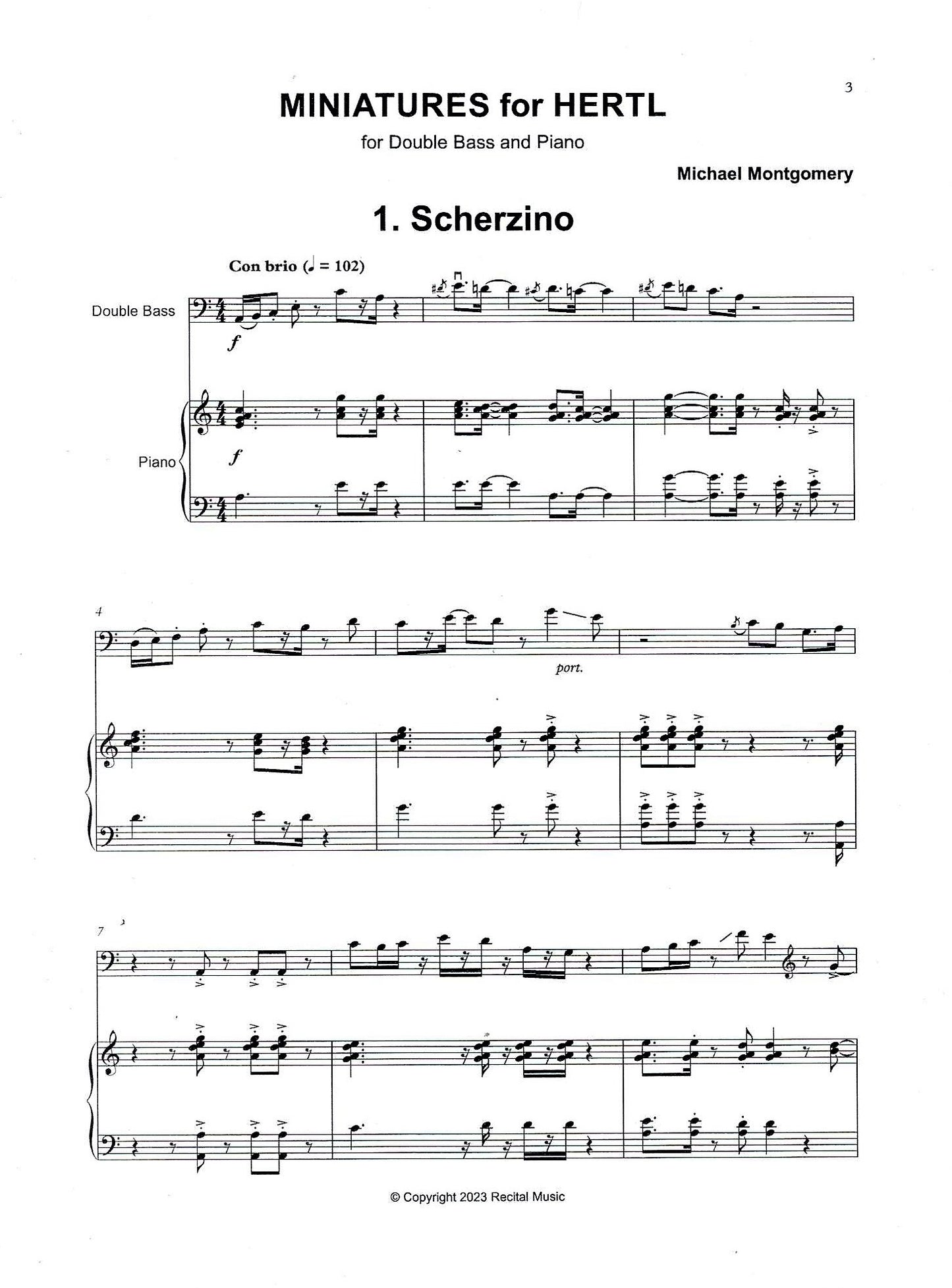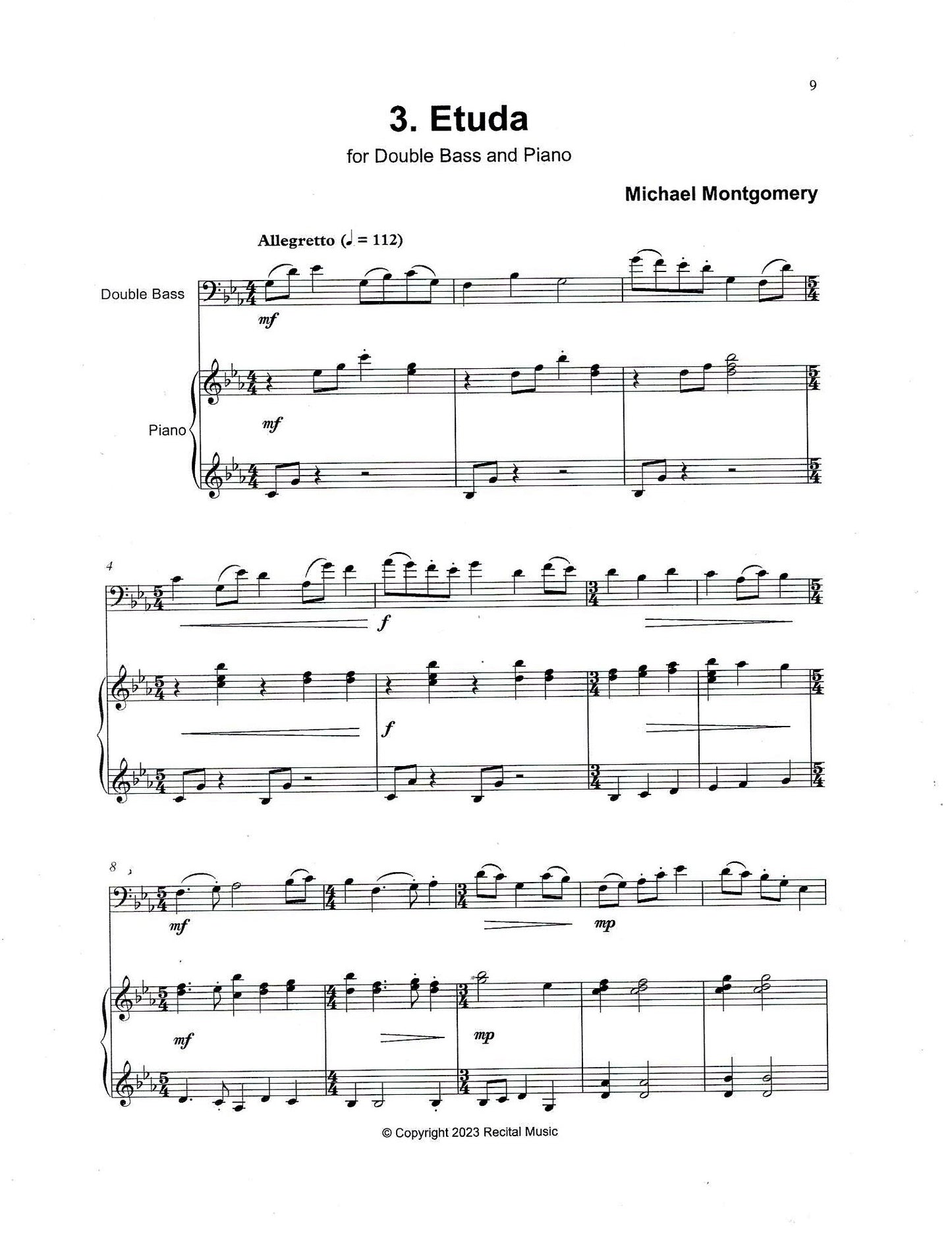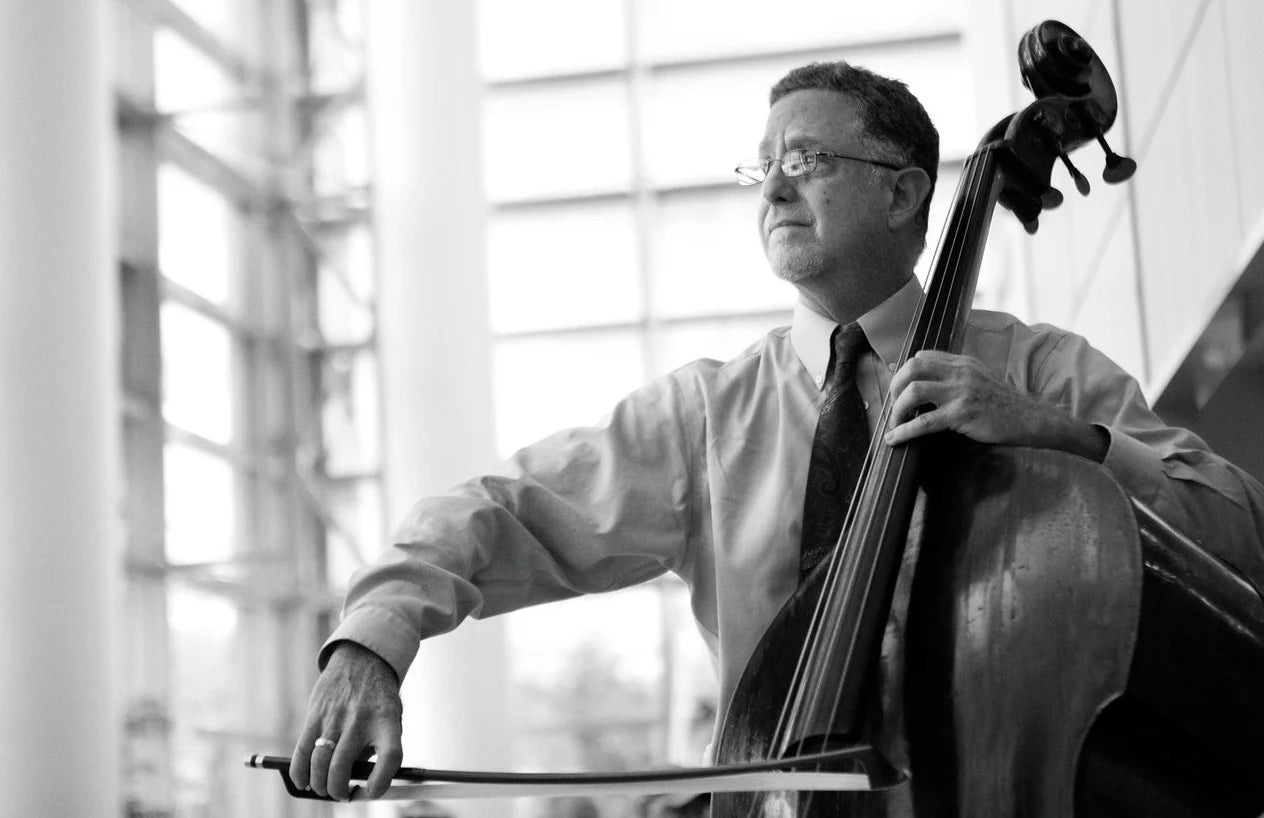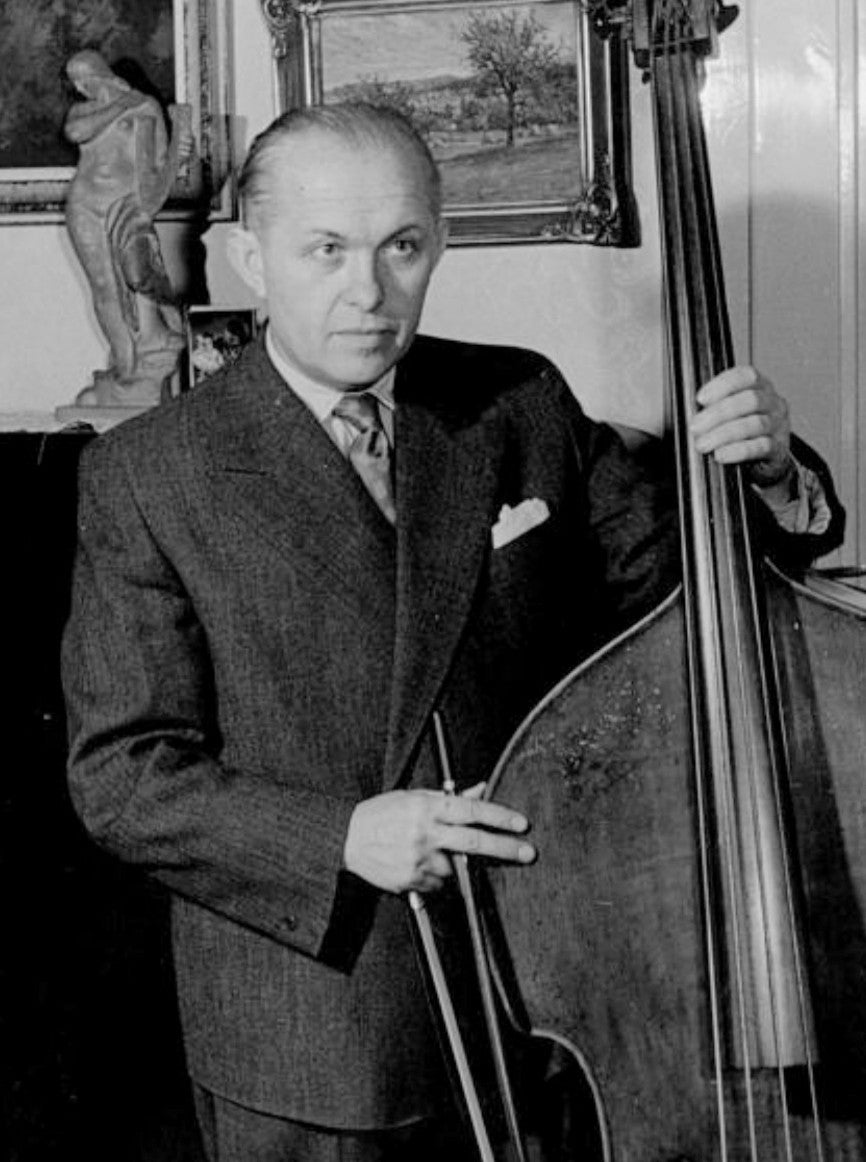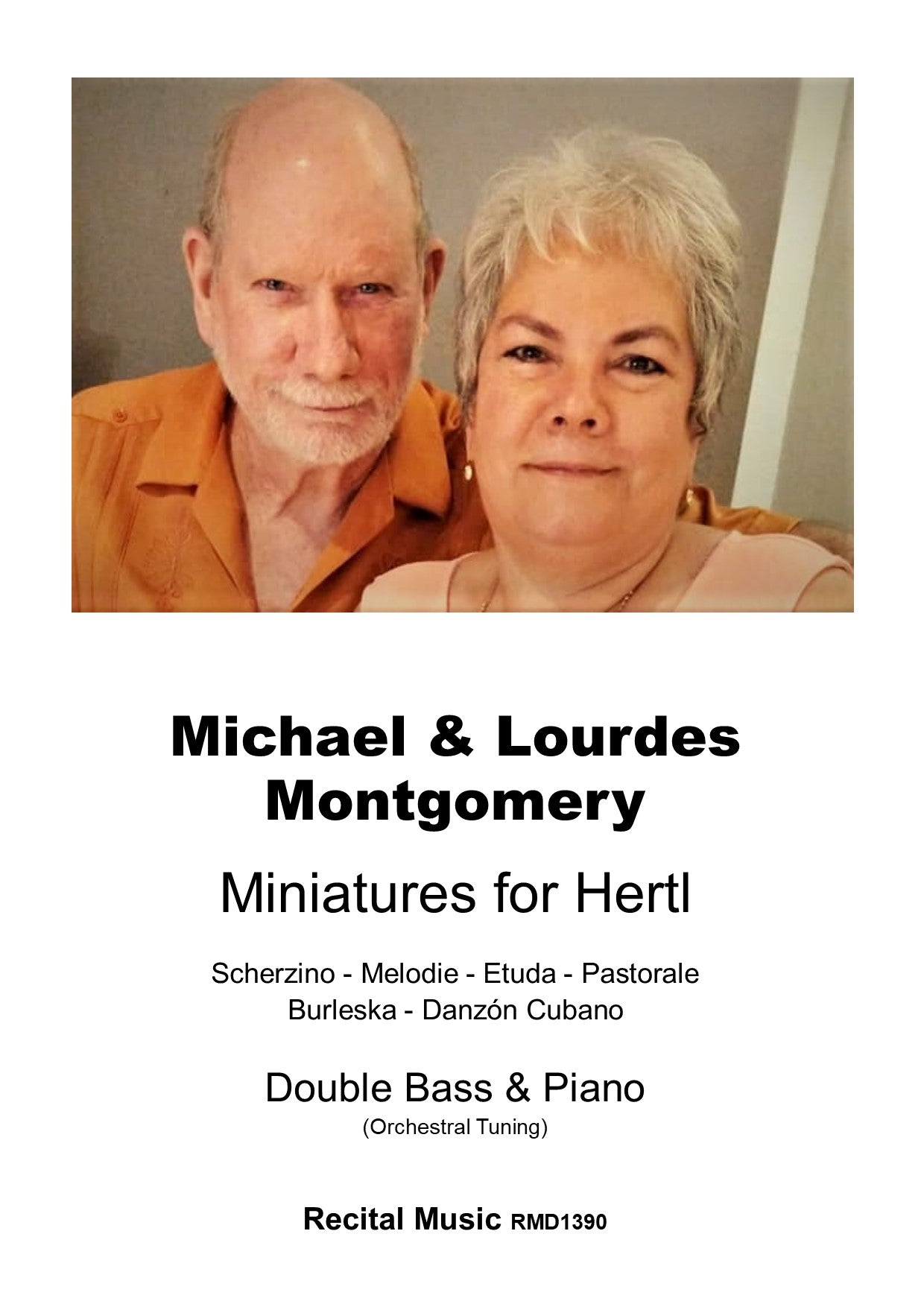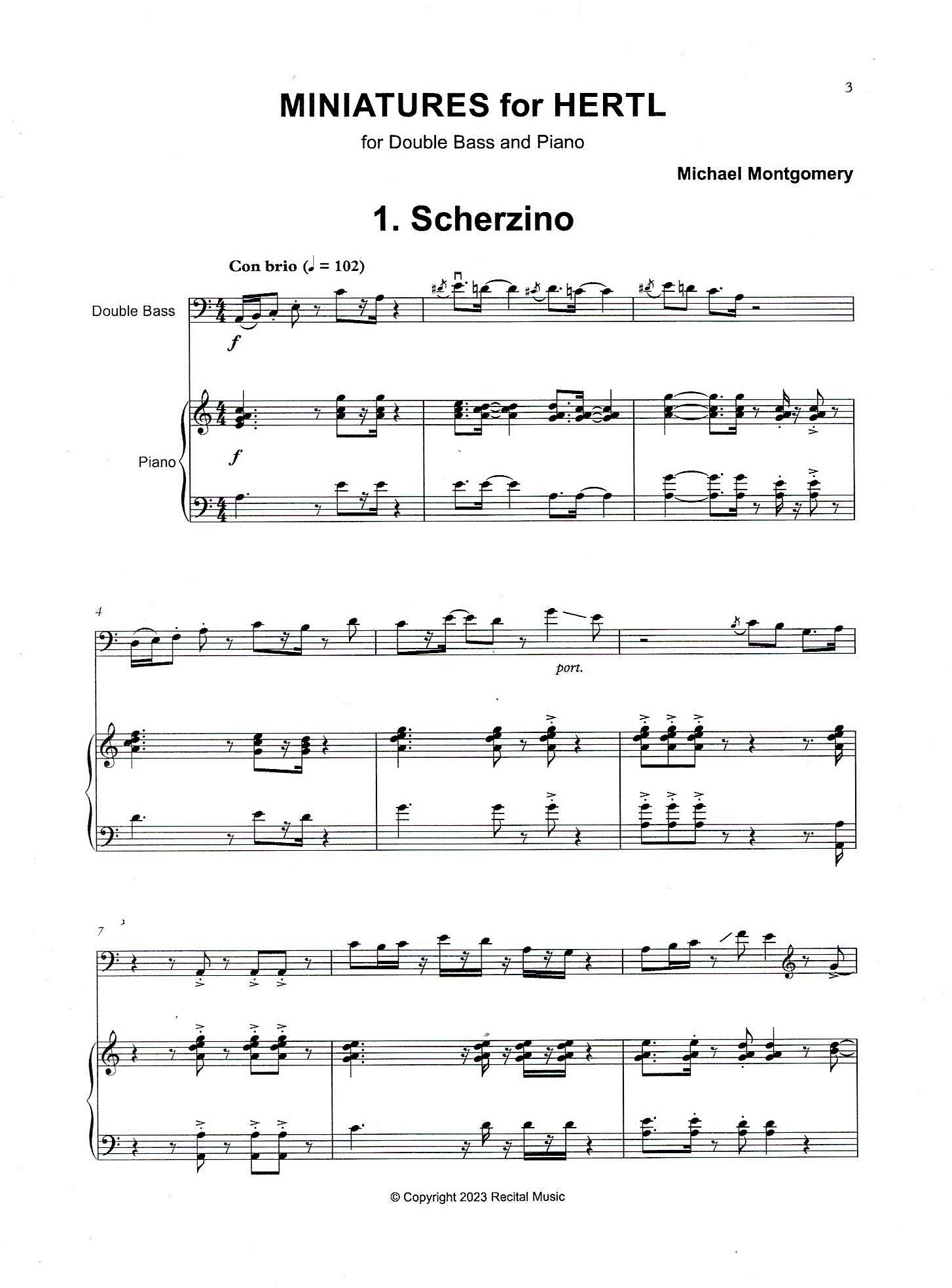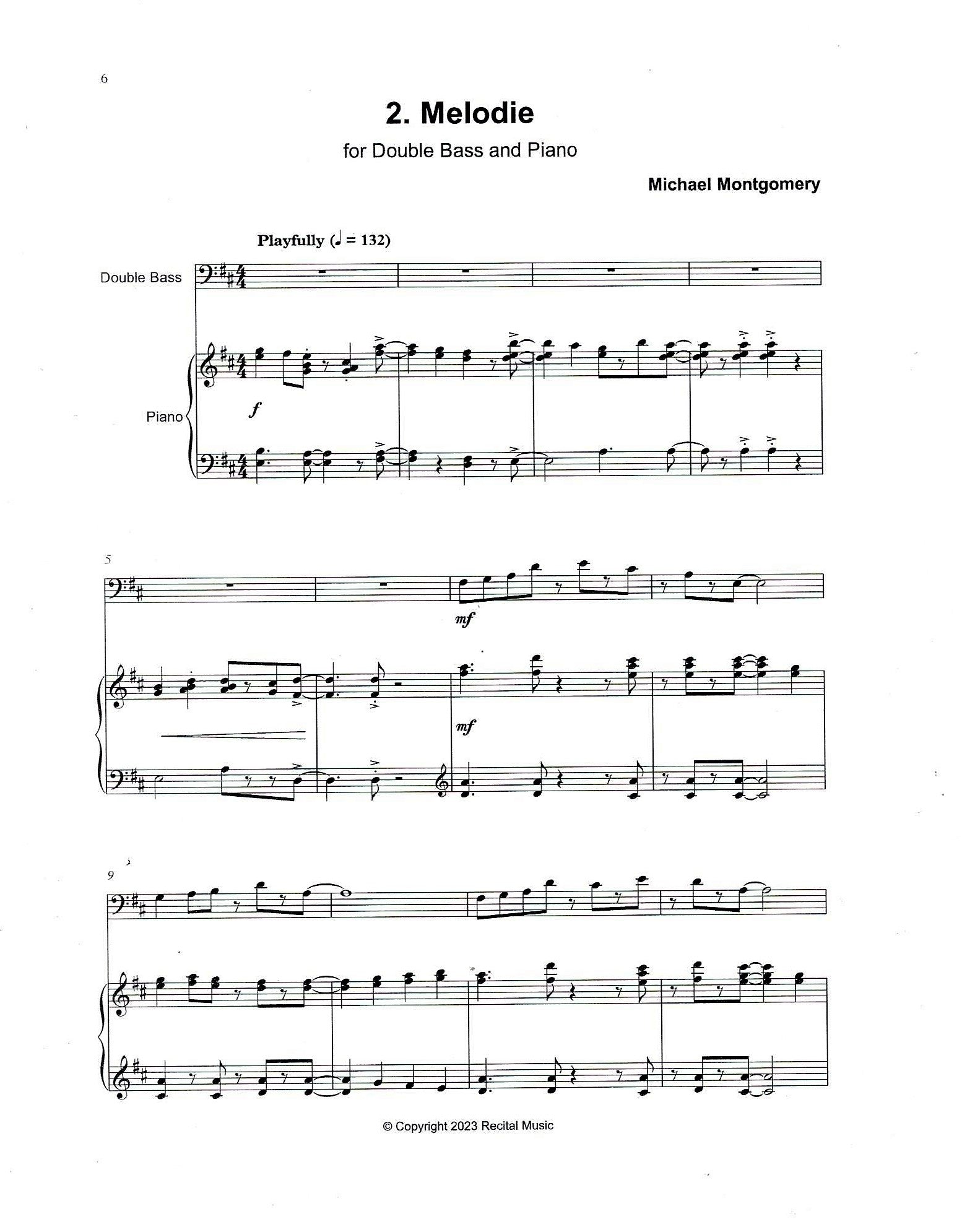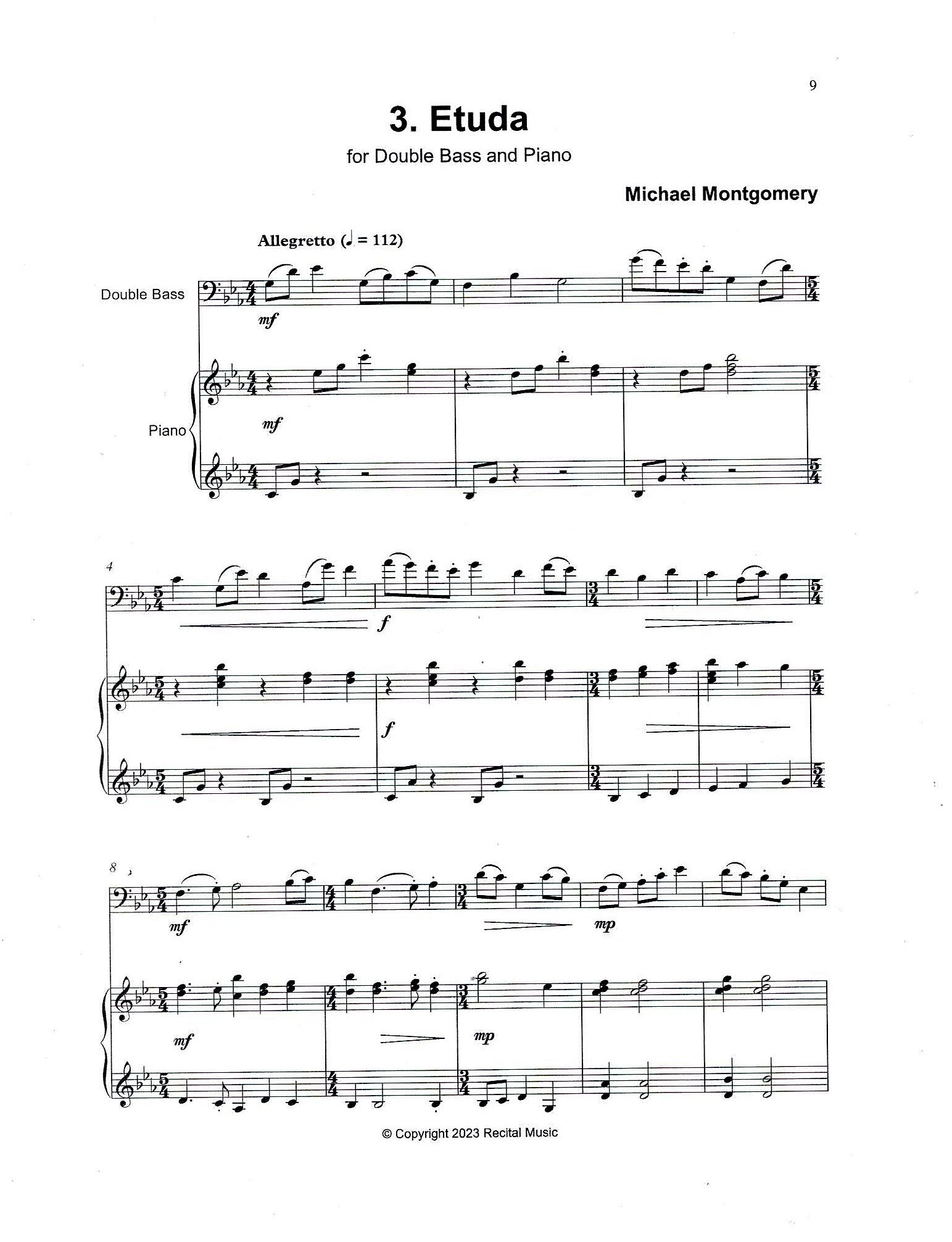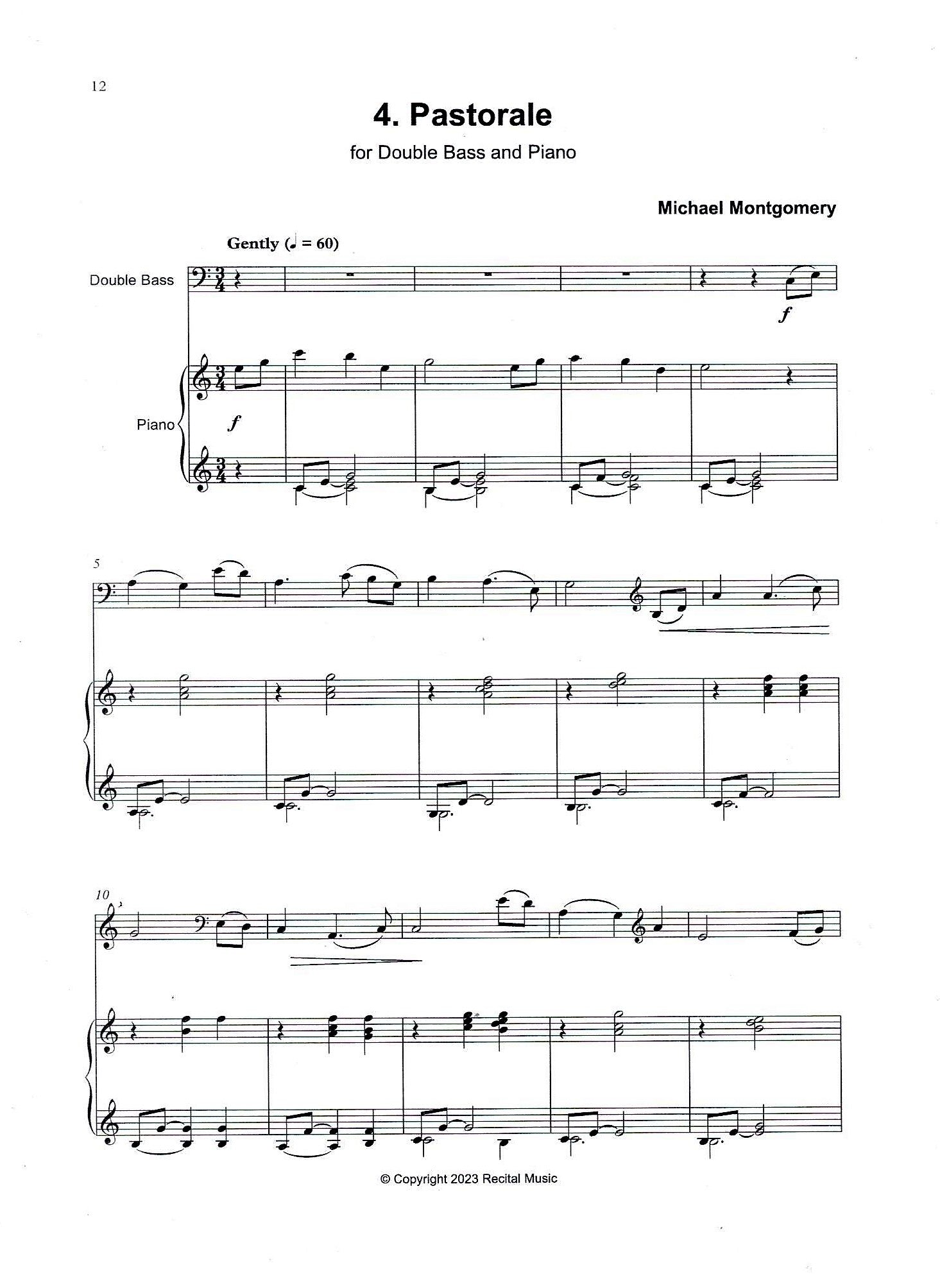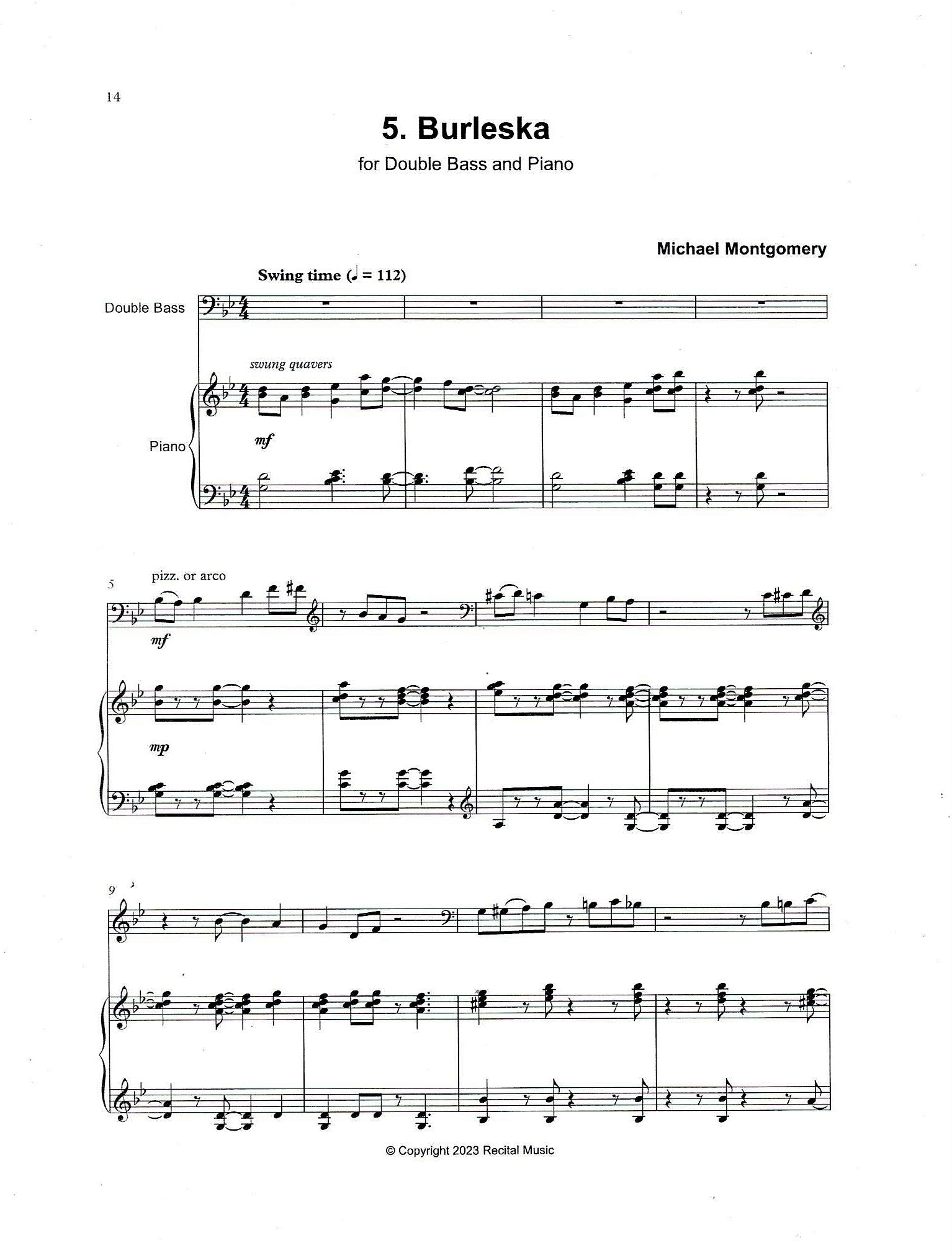David Heyes
Michael & Lourdes Montgomery: Miniatures for Hertl for double bass & piano
Michael & Lourdes Montgomery: Miniatures for Hertl for double bass & piano
Couldn't load pickup availability
About the Compositions
Miniatures for Hertl includes six colourful and engaging pieces for the intermediate bassist, five by Michael Montgomery and one by Lourdes Montgomery. The pieces can be performed individually or as a complete suite and the range of accessible styles and idioms creates a fitting tribute to the Czech bassist-composer František Hertl.
2023 marked the fiftieth anniversary of the death of the Czech bassist-composer-conductor František Hertl (1906-1973). Hertl composed a number of impressive works for double bass, including a Sonata for double bass and piano, which is arguably the finest sonata in our repertoire, and a Concerto which is not as well-known as it deserves.
In the late 1960s or early 1970s, he also composed a series of 30 Miniatures for double bass and piano aimed at conservatoire-level bassists, which are little known today. Each is colorful and inventive, combining musical and technical skills in tandem with supportive accompaniments which add character and distinction.
Hertl Remembered is a project to create a new series of 30 Miniatures in memory of František Hertl. The composers writing for the project are David Heyes (UK), Eric Funk (USA), Michael Montgomery (USA), Peter Byrom-Smith (UK), P. Kellach Waddle (USA), John Alexander (UK), Christopher Field (UK) & Lourdes C. Montgomery (Cuba/USA).
1. Scherzino (Michael Montgomery)
Originally the word “Scherzo”, as it was used by Italians some time ago, described a quality of playfulness or capriciousness, a child-like character or nature as might be found in light-hearted jokes and things spoken in jest. Eventually, the term came to be associated in musical circles with lively compositions of light-hearted or even humorous nature, and by the time Haydn and Beethoven were composing their symphonies, the Scherzo was becoming a viable option for a third movement of a piece in place of the minuet and trio - still dancelike in character (and most often in 3/4 time, still retaining the ABA (ternary) form), it was likely more intense in performance and played at considerably brighter tempi. The word “Scherzino” simply indicates a little scherzo. In my own Scherzino for HERTL REMEMBERED I have tried to emphasize movement, for the most part brisk and lively, not only of the somewhat spirited succession of notes but also of the abruptness of rhythmic activity and change (most prominent perhaps in the piano accompaniment). This piece was not written in the traditional3/4 meter, but the customary ternary form of the typical scherzo is (to a degree) suggested by a calmer, more lyric middle segment sandwiched between a rather vigorous opening section and its reiteration, stated once again at the close of the composition. One performance note may be of interest: the several instances of a tiny note written just before another note of normal size indicate what is called a “grace note.” These grace notes are to be played
just before the note they precede and just before the beat. The straight line between the grace note and the following note indicates a slide, i.e., the performer plays a short glissando from the grace note into the note that follows. The two-and-a-half octave range of this composition is notated entirely in bass clef and should be accessible to any third or fourth-year bass student who has been consistent in their studies and practice. [Michael Montgomery]
2. Melodie (Michael Montgomery)
It has been two centuries since the French first used the term “Melodie” to refer to a style of art song that was at that time evolving in their country. I had hoped when I sat down to consider a “flavor” for my own Melodie, I would be able to come up with something simple and innocent, qualities I imagined to be associated with the French art song. This little piece would be my final contribution to a project organized by Recital Music, a collaboration of a number of bassist/composers who would write a series of miniatures in remembrance of the famous bassist and teacher František Hertl. As I started plucking out tunes, I thought back to those songs I would hear on the radio as a kid, songs expressing so perfectly the naivety of an emerging generation obsessed with first love, butterflies, and the power of flowers, a generation carefree who perhaps (in retrospect) took themselves just a bit too seriously. Despite the obvious disparity (esp. rhythmic and harmonic) between the two bodies of work, I imagined there would be parallels (i.e., innocence, simplicity) - I decided I would draw on certain aspects of this repertory, in addition to that of the French composers of the 1820s, for the composition In the opening statement of the bass solo part, for instance, I attempted to capture a small slice of that moment in time – it would be light in character, benign and innocuous, nowhere ponderous, tucked away in the quiet safety of its D major tonality, but unrestrained in its rhythmic indulgence. The balance of that moment is interrupted briefly (as is often the case in life) as an eight-measure foray into the key of A minor brings a rather aggressive edginess to the otherwise placid happenings of the work. A return to the D major tonality (with a fragment of its previously presented melody) takes us back and leads us to the closing cadence of the piece. [Michael Montgomery]
3. Etuda (Michael Montgomery)
Honestly, I was a little hesitant to take on the task of coming up with a miniature that would somehow be a good fit for this title. My own introduction to the world of the “Etude” came in the form of the oft’ dreaded “New Method for the Double Bass,” written by the famous bass virtuoso and pedagogue Franz [František] Simandl. I had thoughts of studying music at college, bass specifically, but there had been no orchestra programme offered though the school system in which I spent the bulk of my childhood. Though I had for years been gigging around town, playing the electric bass in garage bands, I was told that, in order to study at a conservatory, I would need to start reading music, playing with a bow, and many other things of that sort, so I tightened my belt and dug into those hallowed pages of Mr. Simandl’s Method, six hours each day during those last months leading up to conservatory time. The word etude is a French adaptation of the Latin “studium”, which has to do with “study”. An etude is typically designed as a study, an exercise or set of drills, meant to help an individual target some particular problem or master some specific skill, with the overall hope of raising technical proficiency. One could also hope it might offer some level of musicality, but that, unfortunately, is not the priority. I’ve taken considerable latitude in applying that definition to my own “Etuda” – there are indeed glimpses and hints scales, arpeggios, bowing patterns, etc., but at the end of the day the attempt here was to capture something of the spirit of the etude in a way that the student will (hopefully) find some small measure of fun. [Michael Montgomery]
4. Pastorale (Michael Montgomery)
We are told the Latin noun “pastor” is itself related to the verb “pascere”, which in turn involves the workings of one who would lead his sheep to some countryside meadow or pasture, a shepherd, watching over and tending his flock as they graze, and we might be forgiven if, in the midst of our everyday hustle and bustle, we let our thoughts wander to idealised imaginings of such a rural life and long for it. It is, I suppose, these sorts of musings and longings that find shape and expression in the music we label “pastorale”. Though we do have pastures aplenty up here in God’s country, my own yearnings gravitate inevitably to one of the many forested mountain trails surrounding my home. With elevations in these highlands maxing out at not much more than two thousand feet, changes in altitude occur slowly - slopes tend to be gentle as often as not, and Ozark paths, rising and falling as they please, create in their meanderings a stillness, their own unique melody, tranquil and calming in nature – those of us who write, paint, act, or whatnot, will oftentimes try to capture a bit of that in our endeavours - hopefully the meanderings of this little Pastorale will convey in some small sense that calm. [Michael Montgomery]
5. Burleska (Michael Montgomery)
I googled the word “Burleska” and was quickly presented with a parade of adverts featuring young ladies modeling clothing one might not believe would keep these lassies comfortable on a cold evening. I soon found out the Czech word “burleska” translates to English as “burlesque,” which, for many of us unknowing folks might very well conjure up images of these very models entertaining patrons in a seedy late-night club of the prohibition years. Further investigation, however, revealed such an interpretation of the word is quite limited and somewhat inaccurate: as it turns out, burlesque does not refer specifically to an event featuring tawdry late-night entertainment on the wrong side of the tracks. It does in fact, refer more broadly to any form of literary, dramatic, or even musical work that seeks to, through the use of exaggeration, parody, or caricature, ridicule another more serious work. I do not know if Hertl meant to poke fun at any particular person or thing with his “Burleska”, but I chose to write my own Burleska in a somewhat jazzy style, hoping to create an ambiance one might associate with a late night in a speakeasy during the prohibition era (it was the first image that came to mind when I read the word burleska – mea culpa!). This one-minute work is built in a simple ternary form (ABA after 4 bar piano intro, followed by a short two-measure tag). All 8th notes are meant to be swung, as in the jazz style, and the entire bass part is notated in the bass clef range, which the progressing bassist will find accessible. [Michael Montgomery]
6. Danzón Cubano (Lourdes Montgomery)
The roots of the Cuban Danzón can be found the popular 18th century “country dance” of the British Isles, in which couples (well versed, apparently, in the preordained choreography) danced to the music of a small instrumental ensemble. The popularity of this form of divertissement soon took it to the courts of France (“contredanse”) and even Spain, where it was also performed as a “partner dance” (usually, though not always, by six couples). After a time, the so-called country dance reached the Spanish-American colonies, where it was known as the “contradanse”. There African rhythmic elements were introduced, in part by blacks emigrating to escape Haiti’s revolution of the late 1790s. In Cuba’s upper classes, the dances (when held indoors) were usually accompanied by a “charanga” orchestra, whose instrumentation consisted of flutes, strings, and timbales. The first use of the actual term “danzón” dates from the 1850s, when it appeared in Havana's daily paper, El Triunfo. My own time in Cuba ended when I was but five years old - the culture, however, remained remarkably strong in the Cuban Diaspora, especially in the neighbourhoods of Miami (I think I first heard a danzón on a record player at my Padrino’s house in the U.S.), and the distinctive rhythms of danzón survive to this day in the many quinceañeras (a young lady’s coming of age celebration upon her 15th birthday) in Cuban-American communities nationwide. I have myself some years ago danced in quinceañeras, and indeed, the rhythmic underpinnings of my own Danzón Cubano draw heavily on the rhythm of the ubiquitous Cuban clave common to much of the Cuban music. The premiere of Danzón Cubano took place on February 3 during "Camaguey Culture Week", the celebration marking this Cuban city’s 509th anniversary, at the Sala de Conciertos “Jose Marin Varona.” The concert was presented by the Piano and Double Bass team, Duo A Piacere, consisting of Lourdes Maria Cepero Estrada, piano, and Eduardo Reid Campos, double Bass. [Lourdes C Montgomery]
About Michael Montgomery
Double bassist Michael Montgomery, a student of Robert Rohe (Principal Bass, New Orleans Symphony) and Lucas Drew (Principal Bass, Miami Philharmonic), earned his Doctor of Musical Arts degree in double bass performance from the University of Miami, played full-time in the bass section of the Florida Philharmonic Orchestra for two decades.
He now lives in the Ozark Mountains of Arkansas, where he teaches double bass at the University of Arkansas Fayetteville and privately in his home studio. Michael has composed numerous works for young double bassists (including over five dozen short bass quartets for young students), which are published by Recital Music and two American publishers.
His articles about bass performance, literature, and teaching have been published in American Suzuki Journal, Bass World, and Pastoral Music.
About Lourdes Montgomery
Born in Havana, Cuba, Lourdes C. Montgomery moved to the United States at age five. She studied jazz piano at Miami-Dade Community College with Sanford Gold and, at the University of Miami, music composition with Dr. Dennis Kam as well as classical piano with Dr Rosalina Sackstein. Many of Lourdes' sacred and liturgical compositions are published by Oregon Catholic Press, who also produced her CD entitled "De La Cruz a la Gloria", and World Library Publications.
In 2008, Lourdes was honoured to have her song Bienaventurados ("The Beatitudes") was performed at the mass of Pope Benedict XVI that was held at the National Stadium in Washington, D.C., and televised nationally. In 2005 Lourdes became music director at St. Vincent de Paul Church in the Ozark Mountains of NW Arkansas, where she now lives with her double bassist husband Michael Montgomery.
